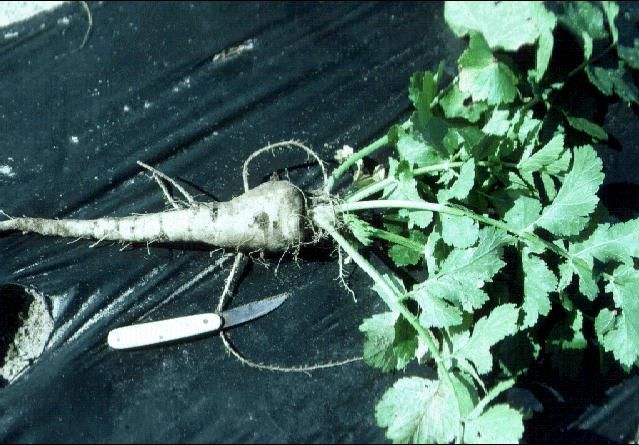Parsnip—Pastinaca sativa L.1
Parsnip is related to the carrot, which it resembles, at least in the root and habit of growth. Unlike the orange-colored roots of carrots, parsnip roots are creamy white on the exterior and white on the inside. Parsnips are reported to have originated in the Mediterranean area, where wild forms were used for food by the Romans. By the 16th century, parsnips were cultivated in Germany, England, and soon thereafter in the American colonies. American Indians learned to grow and store them for eating in the winter.

Credit: James M. Stephens, UF/IFAS
Culture
Part of the parsnip's attraction as a vegetable is its ability to be frozen in the ground, thawed out in the soil, and then later eaten. Its adaptability to colder climates contributes to its low level of popularity as a fresh vegetable in Florida gardens. Winters here are seldom cool enough to produce the vigorous roots and the sweetness imparted to the roots by cooler soils. However, many Florida gardeners will have fair to good results upon occasion.
The parsnip top closely resembles the top of broadleaf parsley. The popular variety 'Harris Model' developed good top growth but spindly roots when planted in North Florida trials in September.
Start parsnips from seed in a manner similar to that for carrots. Normally, about 120 days are required from seeding to root harvest. Seed of this biennial are readily available. They are not long-lived in storage, as it is best to purchase new seed each season.
Use
Since parsnip roots tend to shrivel easily in storage, they are quite often heavily waxed when marketed in retail channels.


